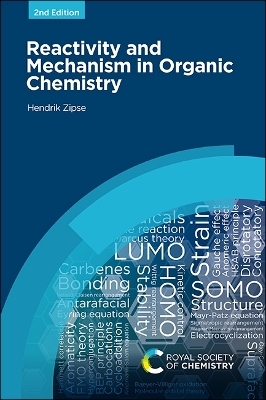
Reactivity and Mechanism in Organic Chemistry
Seiten
2022
|
2nd edition
Royal Society of Chemistry (Verlag)
978-1-83916-743-0 (ISBN)
Royal Society of Chemistry (Verlag)
978-1-83916-743-0 (ISBN)
Completely revised and updated, Reactivity and Mechanism in Organic Chemistry 2nd Edition is an ideal introduction to quantitative description of organic reactivity for students in undergraduate and masters chemistry programmes.
Completely revised and updated, this 2nd Edition of Reactivity and Mechanism in Organic Chemistry is an ideal introduction to the quantitative description of organic reactivity for students in undergraduate and masters chemistry programmes. The book proceeds logically from qualitative molecular orbital theory as a tool for the description of bonding phenomena to combining this with thermochemical data to rationalise concepts such as molecular strain and hyperconjugation. Next, transition state theory, for examining organic reactivity phenomena, is introduced and its relation to energy surfaces and simple rate equations is discussed. On this basis more specific reactivity concepts commonly used in organic chemistry are explored such as the Bell–Evans–Polanyi principle, Marcus theory, HSAB principle, Hammett correlations, the Mayr–Patz equation, and FMO theory. How these reactivity models are applied is demonstrated for pericyclic reactions and selected rearrangement reactions involving transient intermediates such as radicals, diradicals, or carbocations, and for reactions involving classical electrophile/nucleophile combinations.
Completely revised and updated, this 2nd Edition of Reactivity and Mechanism in Organic Chemistry is an ideal introduction to the quantitative description of organic reactivity for students in undergraduate and masters chemistry programmes. The book proceeds logically from qualitative molecular orbital theory as a tool for the description of bonding phenomena to combining this with thermochemical data to rationalise concepts such as molecular strain and hyperconjugation. Next, transition state theory, for examining organic reactivity phenomena, is introduced and its relation to energy surfaces and simple rate equations is discussed. On this basis more specific reactivity concepts commonly used in organic chemistry are explored such as the Bell–Evans–Polanyi principle, Marcus theory, HSAB principle, Hammett correlations, the Mayr–Patz equation, and FMO theory. How these reactivity models are applied is demonstrated for pericyclic reactions and selected rearrangement reactions involving transient intermediates such as radicals, diradicals, or carbocations, and for reactions involving classical electrophile/nucleophile combinations.
Structure and Bonding in Organic Molecules;
Reactivity Models in Organic Chemistry;
Pericyclic Reactions
| Erscheinungsdatum | 20.09.2022 |
|---|---|
| Verlagsort | Cambridge |
| Sprache | englisch |
| Maße | 156 x 234 mm |
| Gewicht | 326 g |
| Themenwelt | Naturwissenschaften ► Biologie ► Genetik / Molekularbiologie |
| Naturwissenschaften ► Chemie ► Organische Chemie | |
| Naturwissenschaften ► Chemie ► Physikalische Chemie | |
| ISBN-10 | 1-83916-743-2 / 1839167432 |
| ISBN-13 | 978-1-83916-743-0 / 9781839167430 |
| Zustand | Neuware |
| Haben Sie eine Frage zum Produkt? |
Mehr entdecken
aus dem Bereich
aus dem Bereich
50 Meilensteine der Genetik
Buch | Hardcover (2022)
Librero b.v. (Verlag)
CHF 13,90


